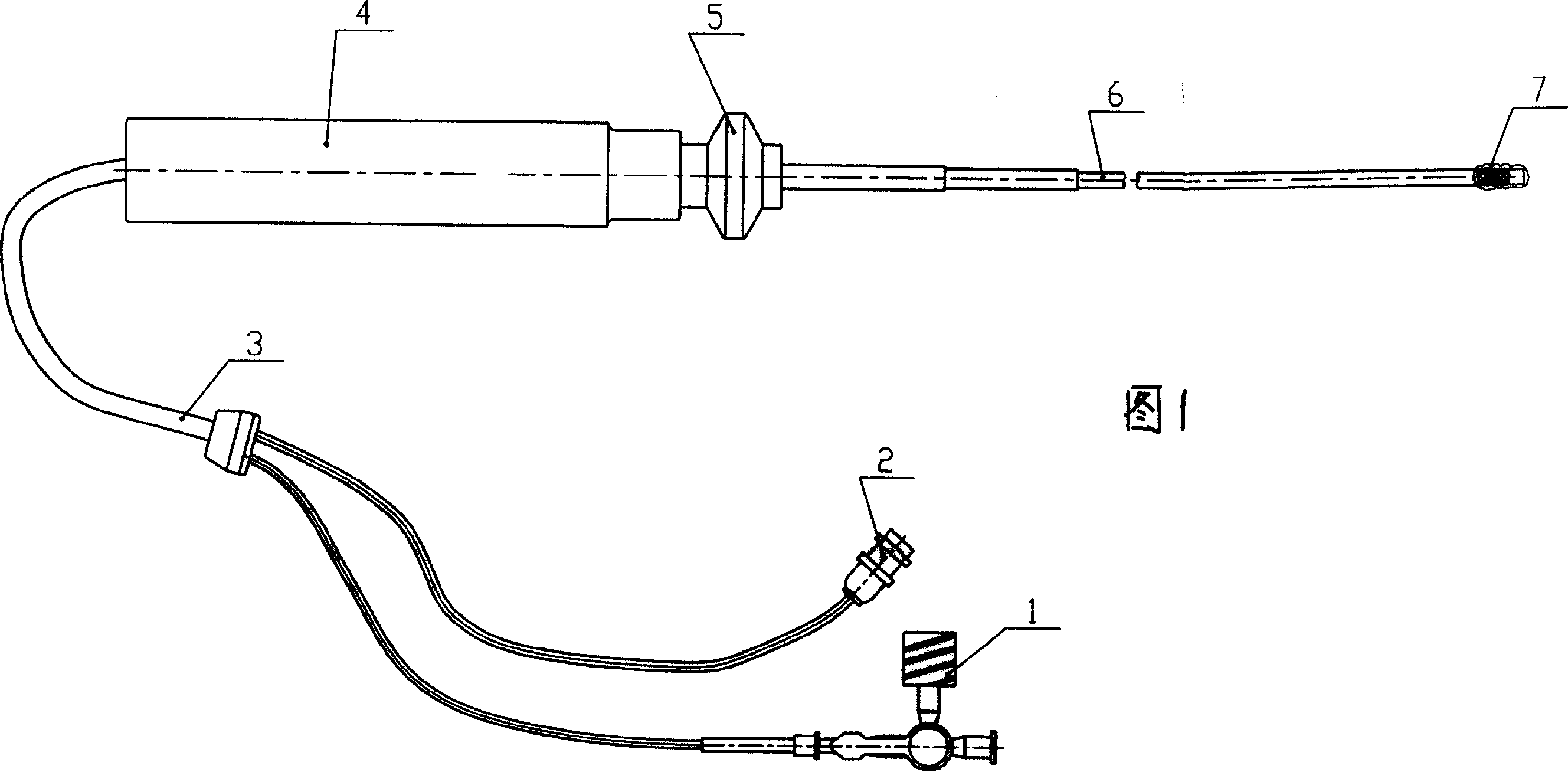Intervention type tissue hardness supersonic obtaining method and intervening supersonic hardness-detecting device
A technology of tissue hardness and detector, which is applied in ultrasonic/sonic/infrasonic diagnosis, sonic diagnosis, infrasonic diagnosis, etc. It can solve problems such as low accuracy, large size, and inflexibility, and achieve the effect of accurate detection and avoidance
- Summary
- Abstract
- Description
- Claims
- Application Information
AI Technical Summary
Problems solved by technology
Method used
Image
Examples
Embodiment 1
[0027] Example 1 Basic Requirements for Catheter Detection by Interventional Ultrasound Tissue Hardness Acquisition Method
[0028] The overall dimensions of the detection catheter are similar to that of radiofrequency ablation leads. The outer diameter of the catheter is 6F. With the help of the vascular sheath, it can enter the left ventricle, aortic arch, thoracoabdominal aorta, etc. through the femoral artery and radial artery. It can enter the vena cava, right heart system and pulmonary artery through the femoral vein. Enter the stomach, esophagus, colon, or uterus directly or with the help of an endoscope; enter the thoracic and abdominal cavities with the help of body laparoscopy (such as with a laparoscope) to enter the abdominal cavity.
[0029] The controllable bending principle of the detection catheter is similar to that of the radiofrequency ablation lead. The hardness parameters are obtained by applying stress to the examined tissue, or by means of the contracti...
Embodiment 2
[0032] Example 2, the basic operation process of the method of acquiring tissue hardness information by interventional ultrasound
[0033] The catheter is sent into the body in the form of an ordinary interventional catheter. The catheter head is in contact with the water bladder and the surface of the tissue with different strengths along the vertical direction of the tissue to be tested. The pressure on the tissue is transmitted to the pressure sensor through the water bladder liquid to obtain a real-time pressure curve. After the water bladder touches the pressure, a certain deformation occurs in the direction of the long axis of the catheter. The deformation is detected by high-resolution ultrasound and displayed and recorded synchronously with the pressure and ECG curves on the same screen in M-mode ultrasound mode. Using the computer software provided by this solution, the hardness constant K value can be obtained by synchronously measuring the pressure applied to the tis...
Embodiment 3
[0035] Example 3 Method for Acquiring Catheter Ultrasonic Hardness Information
[0036] The method includes the following steps:
[0037] a. Establish or set up the ultrasonic transducer and pressure sensor structure carried by the interventional catheter;
[0038] b. The pressure is applied to the examined tissue through the interventional catheter, and the applied force is continuously recorded by the pressure sensor in real time; at the same time, the ultrasonic transducer receives the change of the echo signal in the process of the pressure of the examined tissue in real time and continuously, and passes the M-mode The echocardiographic mode shows images of changes in tissue thickness.
[0039] c. Establish a superimposition or comparison graphic between the pressure signal curve and the image showing tissue thickness changes in the M-mode echocardiography mode; select a good image freeze frame for detection of pressure and deformation thickness to be displayed synchronou...
PUM
 Login to View More
Login to View More Abstract
Description
Claims
Application Information
 Login to View More
Login to View More - R&D
- Intellectual Property
- Life Sciences
- Materials
- Tech Scout
- Unparalleled Data Quality
- Higher Quality Content
- 60% Fewer Hallucinations
Browse by: Latest US Patents, China's latest patents, Technical Efficacy Thesaurus, Application Domain, Technology Topic, Popular Technical Reports.
© 2025 PatSnap. All rights reserved.Legal|Privacy policy|Modern Slavery Act Transparency Statement|Sitemap|About US| Contact US: help@patsnap.com



